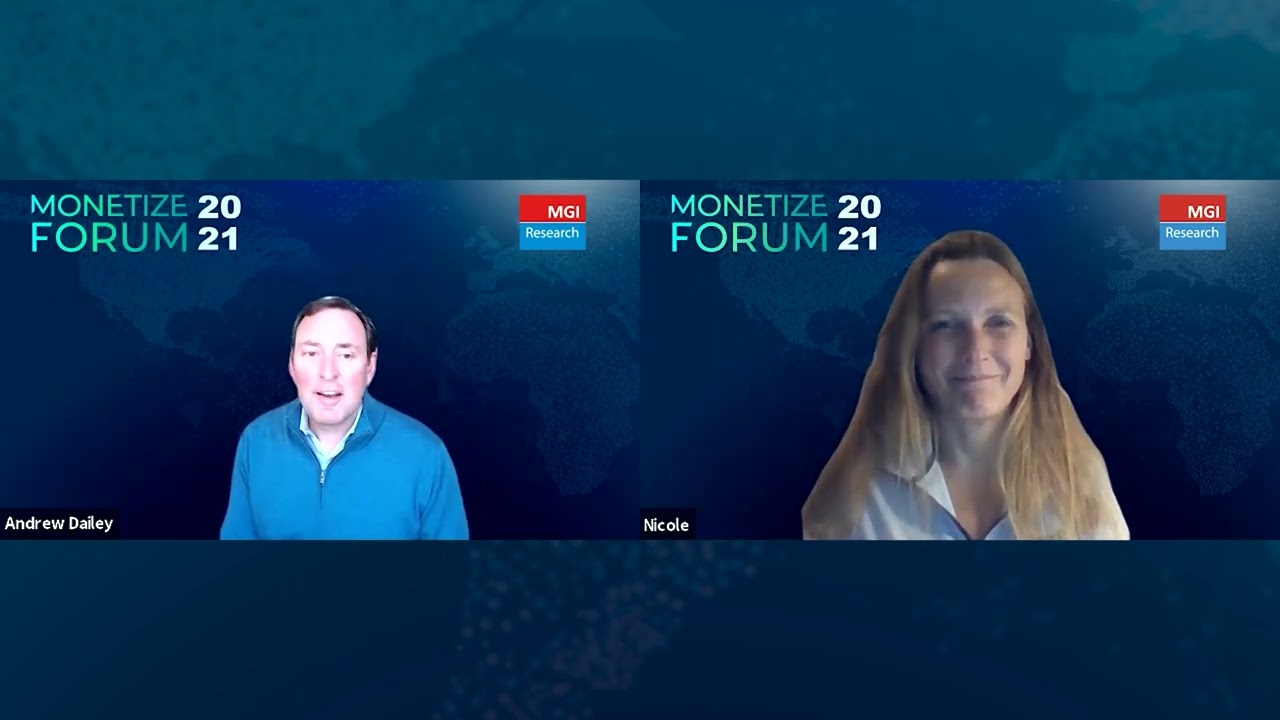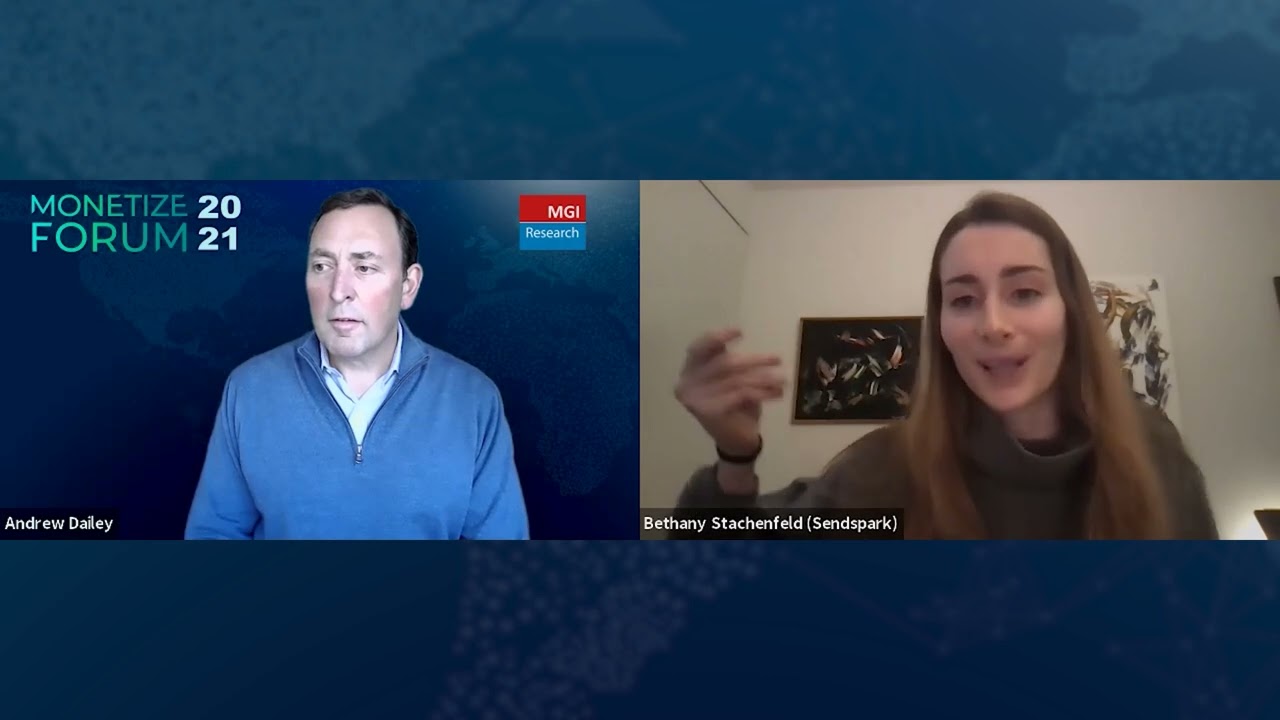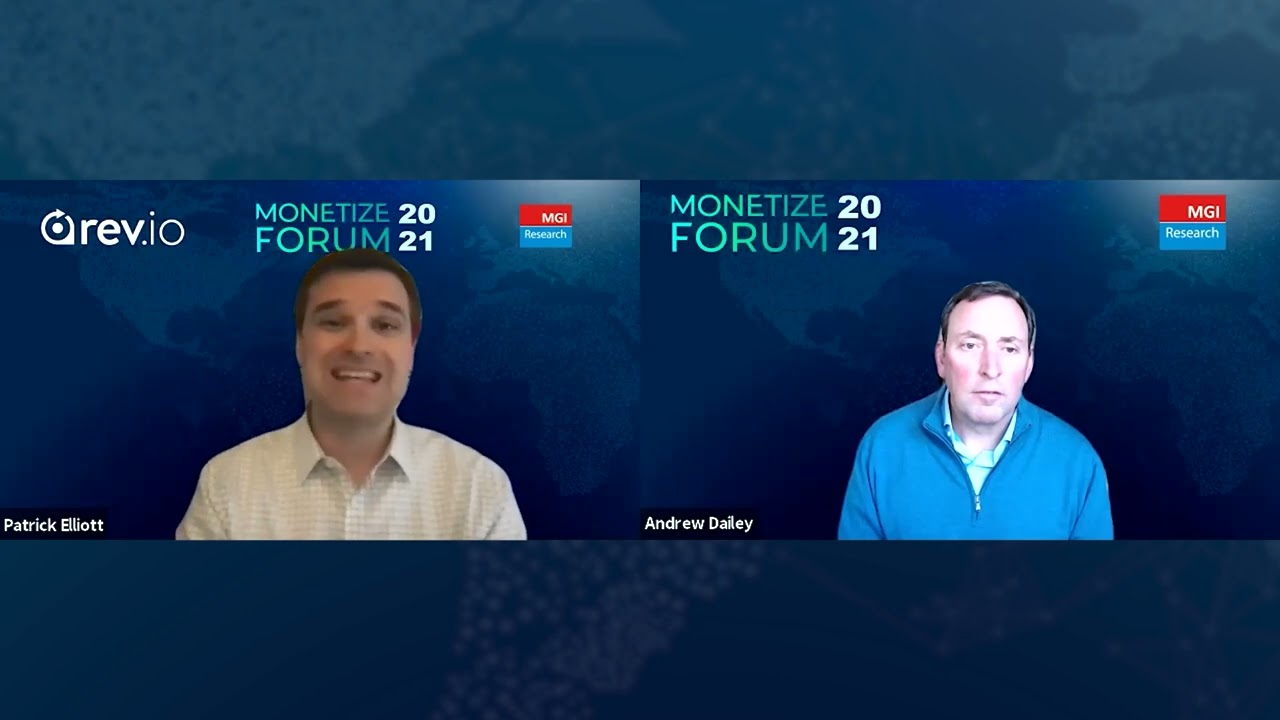The importance of brand loyalty in a world where consumers can compare and choose between seemingly infinite options online has been firmly underlined by the pandemic. People are keeping a tighter hold on their wallets and may go for the cheapest option unless one exists that they truly feel they can trust. Subscriptions can help in establishing an ongoing customer relationship, but untended, they do not equal loyalty. We invited Sarah Kramlich, Site Director for Garmin International, to give us an inside look at how a globally operating enterprise can take measures to make customers feel cared about on an individual level. Sarah played an important role in both this strategizing and in the building out of Garmin’s monetization technology and platform. Her conversation here is with MGI Research analyst Igor Stenmark from the 2021 Monetize Forum.
Key Issues
How do companies with many diverse channels handle monetization and managing connection to their core brand?
What strategies can businesses use to hold on to subscribers who may be reassessing spending during the pandemic?
What lessons can we take from our work-from-home experience?
Guest Profile
Sarah is a Site Director for Garmin International. She is currently in her fifth year there, joining the company after its acquisition of DeLorme.
Sarah spent 22 years with DeLorme Publishing Company, serving as VP of Finance and Operations. She lives and works in Maine and is married with three grown sons.
Igor Stenmark
Hello, this is Igor Stenmark of MGI Research, and we are at the 2021 Monetize Forum. The pandemic has presented numerous challenges to companies of all sizes. How companies managed through this crisis has significantly impacted their survival and prosperity during and post-pandemic. Our next session is “Monetization During a Crisis: Lessons Learned.” In this session, we’ll present the case study of how a global electronics firm, Garmin International, proactively managed monetization during the crisis. Our guest speaker for this case study is Sarah Kramlich, who is a location executive for one of Garmin’s global divisions.
Sarah was actually directly involved in devising and orchestrating many of the strategies that Garmin deployed, and she was also instrumental in building out the underlying monetization technology and finance platform. Prior to joining Garmin in 2016 (this happened with the acquisition of a navigation technology company called DeLorme), Sarah spent over 20 years at DeLorme as VP of Finance and Operations and Treasurer. She was also an accounting professional at the grocery retail giant SuperValu Stores. Sarah holds a degree in accounting from Southern Maine University. Sarah, we’re delighted to have you here. Welcome to Monetize Forum 2021. Thanks for being here.
Sarah Kramlich
Thank you. I’m honored to be invited.
Igor Stenmark
To begin, Garmin is a pretty well-known global brand, but I’m sure there may be some in our audience today who really don’t know much about the Garmin product and company. Can you maybe start us with a brief introduction?
Sarah Kramlich
Sure. Garmin is a 30-year-old company. They operate primarily in five segments: aviation, marine, automotive, outdoor, and fitness, and they develop all kinds of products and services that cater to those five segments globally. We have over 60 locations around the world and 30 locations in the US alone.
Igor Stenmark
Great. I’d just like to say that quite a few of us here at MGI are big fans of your products and are avid users and subscribers. So, Garmin was originally largely a hardware company. You and I discussed the monetization of Garmin at one point, and you described this transformation of the core quote-to-cash function which took place when Garmin leveraged the capabilities acquired from DeLorme. Can you describe some of the challenges that Garmin faced and what the ultimate approach you took was? What was your experience, and what fundamental outcomes were enabled by this change?
Sarah Kramlich
Sure, so like I said, Garmin is a little over 30 years old and primarily a hardware or device company. They had some services sprinkled in, but it was hardware and tangible consumer goods for the most part. In 2011, DeLorme developed the inReach technology, and that led to a subscription-based service that goes along with the inReach. The inReach is a two-way satellite communication device that a subscriber would use, and in order to use the device to communicate, they would have to subscribe to its service.
Garmin purchased DeLorme in 2016, and in doing so, Garmin gained not only the inReach technology but also a subscription billing platform that DeLorme had worked to develop with a couple of third-party vendors during the early days of establishing the inReach service. So, when Garmin purchased DeLorme and started to integrate that capability within its IT platform, they developed ongoing relationships with their subscribers. When you sell devices on a one-off type of purchase, hopefully, you develop something else that the consumer will come back and purchase. However, with a subscription, you have a monthly relationship with your subscriber, and it’s an ongoing relationship that needs to be nurtured and grown. That’s one of the fundamental shifts that Garmin has made since they purchased DeLorme: moving into that ongoing relationship management and maturation as a company to support the things that need to be in place in order to make that happen.
Igor Stenmark
Got it. So, Garmin came into the picture in 2016, they acquired DeLorme, and you guys had already done some initial work on building your subscription platform. As a result, they acquired both the product company and this core capability.
Sarah Kramlich
Yes.
Igor Stenmark
Where is Garmin now in terms of a more global adoption of subscription and usage-based pricing models, and what do you expect might happen in the future in this area for Garmin?
Sarah Kramlich
When Garmin purchased DeLorme, we originally centered our sales of services mostly in the United States. We built out that platform to handle all of our global business for inReach using our current platform. I think what Garmin has come to recognize is how well that process can go, and I think you will continue to see Garmin leverage that core capability across many products—as it makes sense for the customer and for Garmin to do that in geographies where that sort of business is allowed.
Igor Stenmark
Great. When you look at a Garmin-type structure of a company, Garmin, as I understand it, sells both through a channel as well as direct to consumer, so you have a mix of the various business models. How does that work with a subscription or usage-based business? How are you handling monetization of something like that going through all of the diverse set of channels that you guys have?
Sarah Kramlich
As you stated, Garmin has lots of different channels to sell its goods. We sell through distributors, through dealers, on the web, and through OEMs—lots of different models globally. We’re going to continue to leverage all of those great partners we have around the globe to sell our hardware, but when it comes to selling the service and managing the customer and customer relationship for that service, we’ve really worked hard to bring them back to Garmin.
We have multiple websites where we manage that relationship from activation all the way through the subscriber journey—as they manage their plan, as they update their payment methods, as they look at their invoices, as they get marketing messages from us, et cetera. We want them to come back to Garmin every time to control that relationship. In certain geographies or particular niche markets, we do allow some of our resellers to control that relationship, but for the most part, we want to do that with the customer directly.
Igor Stenmark
Right, so it sounds like you provide the subscription management essentially as a service back into your channel, and then you actually manage that platform for most of them—not all of them, but most of them. In some cases, they do it. You also do business with OEMs. How does that work? Do they also manage themselves, or do you guys manage it for them?
Sarah Kramlich
It’s the same thing. There are probably a couple of other steps when you’re dealing with OEMs because OEMs are going to want to make sure that the service works for the customer before the customer gets the end product. So, we have some functionality that allows them to essentially set up a type of demo account with our system to make sure that it works as that OEM would expect for the customer before it gets delivered. Once it gets delivered to the customer, that customer then would come back to us and activate their own account for the device.
Igor Stenmark
Right. So, you can still maintain the direct-to-consumer relationship which is pretty valuable.
Sarah Kramlich
Yes, that’s really important to us.
Igor Stenmark
Yes—and to get all the data. When the crisis of the pandemic hit, we saw lots of companies obviously concerned about things like collections, DSL going up, revenue leakage, or payments not going through. How does all that affect Garmin from your point of view? What are some of the challenges you encountered, and how did you deal with them? You already had a monetization platform in place. How did that help you to cope with this environment?
Sarah Kramlich
Yes, that’s a great question. So last March when the United States was really affected by COVID-19, a lot of us went home to work, and it vastly affected not only our associates but our consumers and customers in ways we hadn’t even imagined. At that point, we really didn’t understand what the virus was and how it was going to affect people long-term. When we started to think about how it was going to affect our subscription customers, we decided to get out ahead of it really early and make a bet that it was really, really important for our subscribers to feel cared for. It was important for us to try to anticipate our subscribers’ needs, whether those were financial or just their state of mind, and we wanted to get in front of that really early.
Some of our subscription plans do require a customer to get into a contract with Garmin that essentially states they will pay for the monthly service for a certain amount of time, usually a year. One of the things that we did was to tell our subscribers, “Listen, we understand we’re all going through a really tough time. We understand that you may want to cancel your service. We would love to keep you on as a subscriber, so we would like to offer you the ability to move into a month-by-month plan that you can cancel at any time without penalty. We will waive your contract remainder fee that you would normally be charged if you canceled early inside of contract period. We will waive those fees, and we will allow you to go into suspend (which is no charge), or we’ll allow you to cancel completely without paying a fee because we’re in unprecedented times.”
It was really important that our subscribers felt like we were all in this together because we were truly in this together, and it felt like the right thing to do by them. It was a very successful strategy. We retained most of our subscribers by doing that, they have continued to come back on regular paid plans, and they continued to use our service over the remaining months up until now. The other thing that we did was communicate a lot to our subscribers about why it made sense for them to continue to use our service and why they might need it when they go outside on the trail or for whatever activity they were able to do during this really, really tough time. We call it intentional support, and we really cared for our subscribers and made them feel, as I said, like we are in this together and will get through this together. That seemed to resonate very well with our customers and really built loyalty, honestly.
Igor Stenmark
Yes, I can imagine. How long did it take you guys to put this plan together and put it into action? Here we are in March, and North America gets hit with COVID—how long before you said, “Okay, we need to have a different plan. We need to be creative here”? How long was it until that plan was actually implemented and up and running?
Sarah Kramlich
We did it within a matter of days, in less than a week. If a customer came to our website and initiated a cancel, we would pop up messaging that I just described. If a customer called into our contact center and ask them to cancel, it was a script that the billing team had. We just got it all connected within a couple of days and executed it, and that plan lasted through the month of March and all the way through the middle of June when it didn’t seem like we needed to do this anymore. By that time, a lot of the geographies opened up in terms of people being able to go outside and use our devices, but the goodwill and the customer comments we got were amazing and very favorable.
Igor Stenmark
Yes, it’s certainly in the category of “free prize inside,” and as a customer myself, I can attest to that. Doing all of what you did in terms of being able to devise a strategy and react quickly, it sounds like you tied this all together into customer service and customer experience, so that requires a platform which really works, is agile, and can react in less than geological time to changing conditions.
Sarah Kramlich
Very much so.
Igor Stenmark
So, expanding on what happened in the pandemic, you guys have a pretty large global workforce. What kind of lessons have you learned as a company in terms of managing a crisis like this and how it affects your workforce? What are some of the practices that you’ve put into place, and what do you think will survive past the pandemic?
Sarah Kramlich
I think we learned that we can do things remotely that we never knew how to do before. I think that’s a pretty resounding concept that most global companies at this point have recognized. However, I think we also figured out what makes sense to do in person, and I think that the long-term companies like Garmin are hopefully going to take advantage of the best of both worlds. We’re learning what things we can do for our associates in terms of flexible scheduling and allowing them to work remotely. Not every role can do the work remotely, but some roles certainly can. At the same time, we want to make sure that we have very intentional gathering places where associates can exchange ideas and work through designs of new products. I think the entrepreneurship and creativity really comes from people coming together, and we can’t always do that over video.
We’re going to try to continue to do that, but to the degree we can come together in the ways and places that it makes sense, I think you’ll see that happen for most companies. I think if we can get the best of both worlds out of this pandemic and have the technology and collaboration tools to allow us to do that as effectively as possible, that’s great. That said, I don’t really think people are going to want to be completely separate all of the time long-term. I think that’s going to be important.
Igor Stenmark
Agreed. Yes, with other companies as well, we see everybody is talking about adopting some sort of a flexible hybrid model. They’re looking to go forward in a way that gives people the opportunity to be physically located where they want but on the other hand also gives them an option to get together with colleagues because the social aspect is still very important.
Sarah Kramlich
It’s so important, yes.
Igor Stenmark
Everybody is so fed up. I have one last question for our remaining time. What is one thing that consumers and businesses, in general, should know about Garmin that they don’t? What’s your secret?
Sarah Kramlich
So, the name Garmin came from the first names of the two founders, Gary Burrell and Dr. Min Kao—people might not realize that. I think the thing to know about Garmin, though, is the vision of those two leaders. We strive to develop the most compelling products that we can with superior quality and the best value for customers. I think that’s the important thing to know about Garmin.
Igor Stenmark
Great. I never knew that. That’s fascinating. Sarah, thank you very much for joining us here at Monetize Forum 2021. I hope you have a great rest of the conference and a great year.
Sarah Kramlich
Thank you so much.




